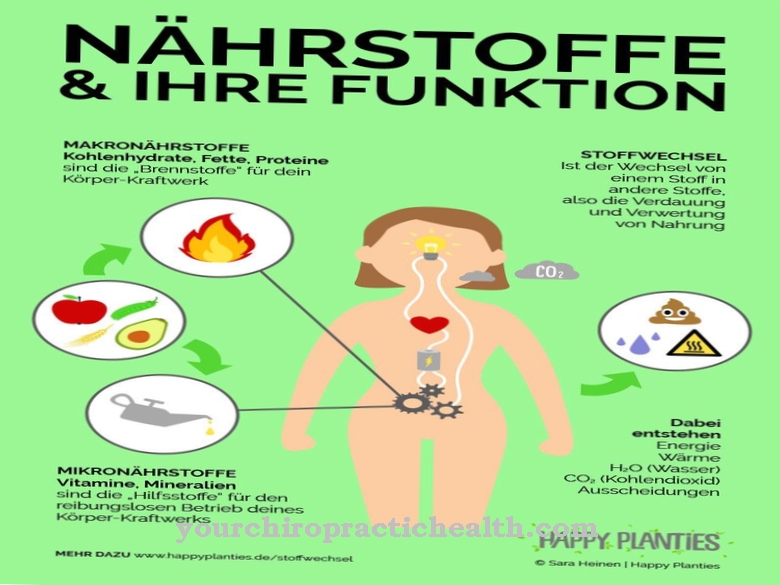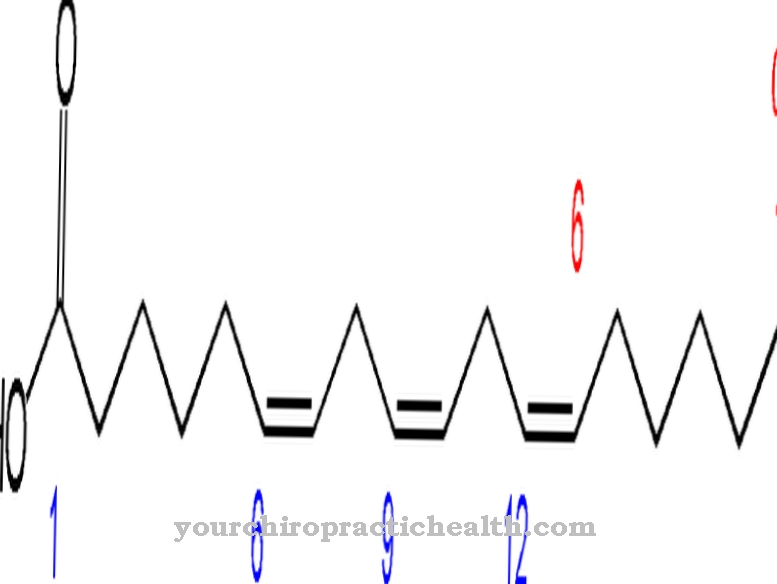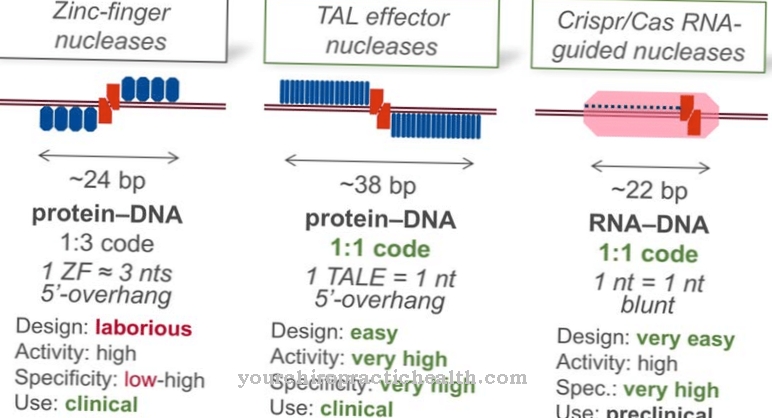The Aldehyde oxidase is an enzyme that breaks down aldehydes in vertebrates. It can be found in different tissues of mammals and humans. The exact function of the aldehyde oxidase is not yet known.
What is aldehyde oxidase?
Aldehyde oxidase (AOX1) helps with the enzymatic breakdown of aldehydes in the body. However, it was found that it also breaks down nicotine into cotinine. An oxygen atom is built into the oxygen-free nicotine to form an aldehyde structure.
Due to this fact, the aldehyde oxidase is also important for the tryptophan metabolism and at the same time for the biotransformation. It is mainly found in the cytosol of the liver cells, pancreas, lungs, skeletal muscles or fat cells. The cofactor molybdenum is very important for the activity of the enzyme. There is only one AOX gene in human DNA that can encode a functional enzyme. Several AOX genes are active in other vertebrates. Aldehyde oxidase is very similar to and related to the enzyme xanthine dehydrogenase.
Both enzymes can convert hypoxanthine into xanthine by absorbing an oxygen atom and a water molecule. The conversion of xanthine to uric acid, however, only takes place through xanthine hydrogenase (xanthine oxidase). The aldehyde oxidase consists of 1338 amino acids. Molybdopterin, FAD and 2 (2Fe2S) serve as cofactors for their effectiveness. The reaction already characterized by the name characterizes the conversion of aldehydes with the addition of oxygen and water to carboxylic acids and hydrogen peroxide.
Function, effect & tasks
The enzyme aldehyde oxidase catalyzes several reactions. For the most part, it is responsible for the conversion of aldehydes to carboxylic acids with the addition of oxygen and water. In general, aldehyde oxidase mediates the addition of an oxygen atom to a substrate.
Among other things, it also catalyzes the conversion of nicotine to conitin. Therefore, it also plays a major role in biotransformation and tryptophan metabolism. Molybdenum is always required as a cofactor in these reactions. As part of the biotransformation, it converts xenobiotics with aldehyde groups into the corresponding carboxylic acids in the phase I reaction. In the phase II reaction, glucuronic acid is attached to the carboxyl groups to increase the water solubility in order to flush the foreign molecule out of the body.
Structurally and chemically, aldehyde oxidase is closely related to the homologous enzyme xanthine hydrogenase (xanthine oxidase). However, it is not known why the conversion of xanthine to uric acid with the addition of oxygen and water is catalyzed only by xanthine oxidase. The conversion of hypoxanthine to xanthine is still catalyzed by both enzymes. Furthermore, aldehyde oxidase is also responsible for adipogenesis (reproduction of fat cells).
It stimulates the secretion of the tissue hormone adiponectin. Adiponectin, in turn, increases the effectiveness of insulin. In the hepatocytes, adiponectin in turn inhibits the release of aldehyde oxidase. A deficiency in aldehyde oxidase (AOX1) also inhibits lipid export from the cells. The exact function of the aldehyde oxidase is not yet fully understood.
Education, occurrence, properties & optimal values
Aldehyde oxidase is mainly found in the cytoplasm of liver cells. However, it is also found in fat cells, lung tissue, skeletal muscles, and the pancreas. It used to be confused with the homologous xanthine oxidase.
Both enzymes have a similar structure. However, they sometimes catalyze different reactions. Both enzymes need the same cofactors for their function. These are molybdopterin, FAD and 2 (2Fe2S). However, aldehyde oxidase not only degrades aldehydes, but is also responsible for the oxidation of N-heterocyclic compounds such as nicotine to cotinine.
Diseases & Disorders
Together with xanthine dehydrogenase (xanthine oxidase) and sulfite oxidase, aldehyde oxidase is dependent on the cofactor molybdenum. The molybdenum is built into a molybdopterin as a complex atom and forms the molybdenum cofactor. In the case of a molybdenum deficiency, these three enzymes function poorly.
Xanthine dehydrogenase catalyzes the breakdown of xanthine into uric acid. The enzyme aldehyde oxidase is only partially involved in this process, for example when hypoxanthine is broken down into xanthine. Here it even competes with xanthine oxidase. Hence there is no isolated aldehyde oxidase deficiency. However, aldehyde oxidase supports the breakdown of catecholamines. The sulfite oxidase is responsible for the breakdown of sulfur-containing amino acids such as cysteine, taurine or methionine. If this enzyme is deficient, sulfite is no longer converted to sulfate. Because of the cofactor molybdenum, the three enzymes usually have a common deficiency.
Of course, isolated defects due to mutations are possible for each of these enzymes. However, no clinical picture with a specific aldehyde oxidase deficiency has been described so far. A molybdenum deficiency induced by an unbalanced diet is very rare. However, this can happen with parenteral nutrition that is low in molybdenum for more than six months. In such cases, tachypnea, tachycardia, severe headache, nausea, vomiting, central facial obstruction, or coma are common. Furthermore, there are intolerances to certain amino acids. Elevated sulfite concentrations are found in the urine, while decreased uric acid values are found in the blood.
If the molybdenum deficiency persists, it can lead to problems with the breakdown of sulfur-containing amino acids, sulfite allergies, hair loss, low blood uric acid levels and fertility problems. Most of the symptoms, however, are due to the sulfite oxidase and xanthine dehydrogenase deficiency. The tachycardia is probably due to increased levels of adrenaline or noradrenaline (catecholamines), as their breakdown is delayed by the lack of aldehyde oxidase. A molybdenum deficiency can be caused by a diet that is extremely low in molybdenum and in inflammatory bowel diseases such as Crohn's disease with malabsorption of food.
A hereditary molybdenum cofactor deficiency due to impaired synthesis of molybdopterin is fatal if all three enzymes fail without treatment.



























